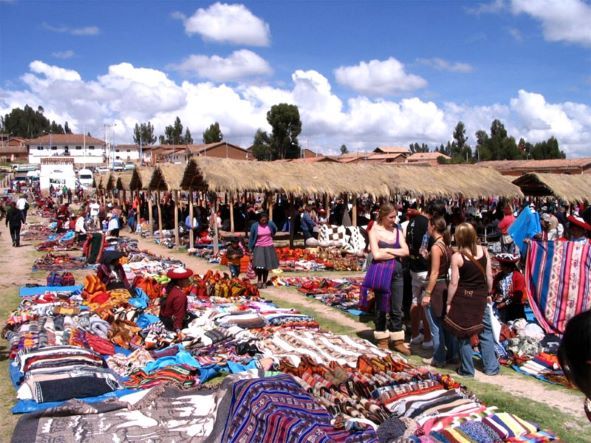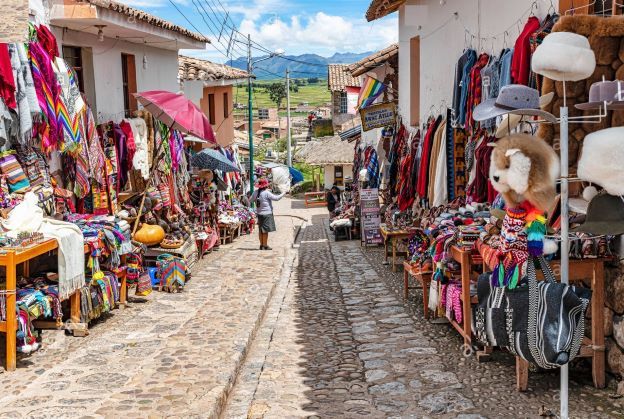The Chinchero Peru Archaeological Park is a little known destination in the Sacred Valley of the Incas. However, the historical importance of the place makes this place one of the most important in the city of Cusco. Its platforms and stone constructions keep the traces left not only by the Incas but also by the cultures that preceded them. Discover the secrets that guard the archaeological park of this traditional city in Peru.
Attractions
Handicraft fair
The Chinchero Peru fair is one of the most important in the region due to the high quality of handcrafted products sold there, internationally recognized for their excellent work and beauty. At these fairs, we can see that the exchange (old way of exchanging products) is still in force. In Chinchero, the granddaughters of the Inca princesses continue to weave wool and make garments, as the ajllas did for the sons of the Sun, in imperial Cusco.
The Archaeological Park of Chinchero


The Chinchero Peru Archaeological Park is one of the main attractions of the city. It is an important agricultural area of up to 43 hectares, developed during the Inca period and which was previously inhabited by the Killke culture. It stands out for its stairs, Inca walls and beautiful platforms where camelids grazed and the land was cultivated with various products. In it were found pieces of ceramics, remains of bones and stone works that are currently on display at the Site Museum.
It is estimated that in 1480 and during the Túpac Yupanqui government, a palace was built where the Inca lived with his family. This was done with 10 trapezoidal niches and fine stonework. Today, this religious sanctuary has become a tourist attraction. It is characterized by presenting works by the famous Cuzco painter Diego Quispe Tito. The atrium is finely made of gold leaf. There is the Virgin of the Nativity.
Currently, the Archaeological Park of Chinchero Peru still has treasures to be discovered. In January 2018, another set of enclosures and terraces were found buried several years ago during the construction of the houses and the Site Museum of the site. It is estimated that part of the city of Chinchero was built on Inca ruins.
Living Culture
Chinchero is one of the few places where time seems to go by, as Inca traditions and culture still persist. The people who inhabit it are of Inca blood and the predominant language is Quechua, although almost all the inhabitants of this area speak Spanish as a second language.
Agriculture
Their fertile lands make them excellent producers of potatoes, ollucos, geese, fava, barley and wheat, traditional products whose sowing dates back to the time of the Incas and still today constitute the axis of agricultural trade in the region.
How to get to Chinchero Peru?
Chinchero is approximately 40 minutes from Cusco. Buses pass through Chinchero on the way to Urubamba and Ollantaytambo. It is possible to ask the driver to drop you off in the city of Chinchero and walk the short distance to the square. A tour to the Sacred Valley can be organized to include the ruins of Chinchero and the Interpretation Center. This can be easily arranged when you book your trip to Peru with us.










